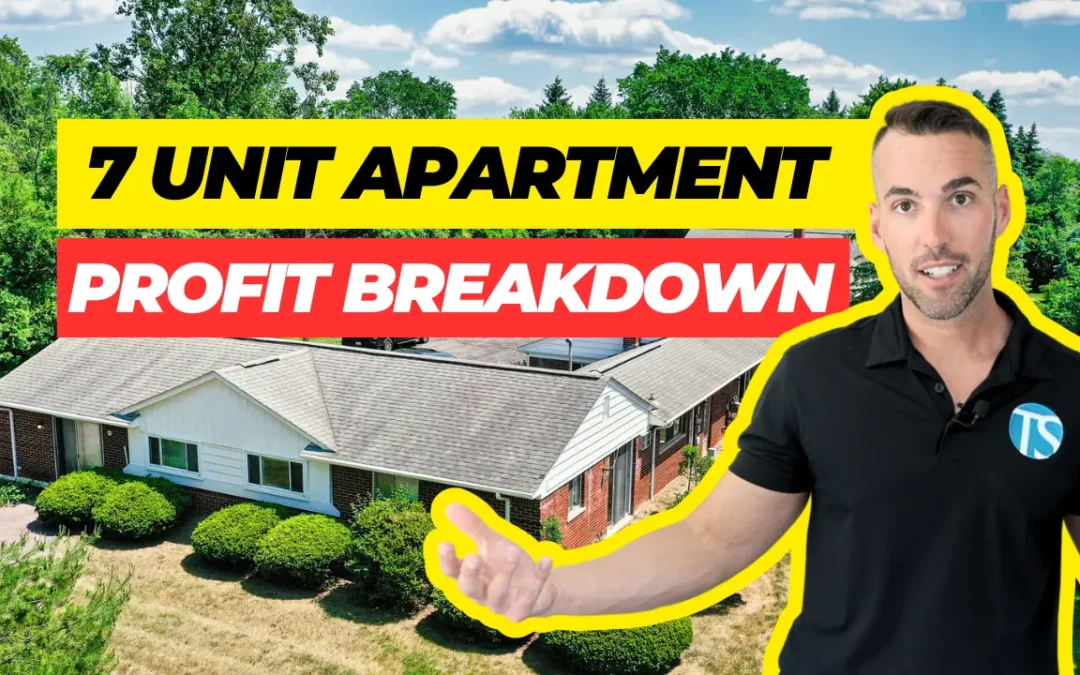Are you looking to build wealth through real estate investing in 2022? If so, congratulations! You’ve made an important decision that will not only allow you to start growing passive income now, but could also help you even achieve financial freedom. But, before you get too far down that path, let’s take a look at something that could influence which direction you go from here – the distinction between single family vs. multi-family real estate investing.
What is a single family rental property?
Based on the name alone, you might think that a single family residence is just that – a home for a single family or tenant. In real estate investing terms, however, ‘single family’ can actually mean anything from a single unit all the way up to four units. So, based on that definition, your personal home, a duplex, or a fourplex could all be considered ‘single family’.
Pros and cons of single family real estate investing
Just like anything else in life, there are advantages to investing in single family units but also disadvantages. Here are a few of the most common pros and cons of single family real estate investing:
Pros:
- Single family properties are typically affordable and easy to get into – Single-family units often make a great place to begin for people who are just getting started with real estate investing. The purchase price is relatively low (compared to multi-family units), making this type of rental property a good way to ‘get your feet wet’ in the real estate investing world.
- You can get conventional financing through virtually any bank – As long as you have decent credit, sufficient income, and are able to make a downpayment, it’s generally pretty easy to get financed for a single-family rental property.
- You can live in one unit and rent the other(s) – If you don’t already have a primary residence, single-family real estate investing can be a great way for you to get one AND be able to build rental income as well. As long as you purchase a 2-4 unit property, you can live in one unit while renting out the others. You get a place to live that’s essentially paid for by someone else – how great is that?
Cons:
- Rental income is limited – If your goal is to increase your passive income and achieve financial freedom, it could take a while using single-family properties. That’s because with only a few units to rent out, your rental income will be more limited than it will be with a multi-family unit.
- Single-family rentals are more difficult to scale – Which goes along with limited rental income. When you purchase a single-family unit, it requires much more time and work to see significant growth in your real estate business. You’re also limited to 10 mortgages so if each one only has a couple of units each, your income potential isn’t nearly as great.
- You don’t have control over the property’s appreciation – While you may be able to make some improvements to the property that could allow you to charge more for rent, the ultimate value of the property is dictated by the market and comparable properties around it that sell.
- Single-family units are more time and management intensive – Imagine having a variety of single-family units scattered across metro Detroit, the city where my wife and I are avid real estate investors. Maintaining and managing each property takes a significant amount of time and effort. And, you’re less likely to be able to hire a property management company to manage the properties for you.
What is multi-family real estate?
Multi-family real estate investing involves purchasing properties with 5 or more units, some of them having significantly more than that. For example, my wife and I own a 20-unit apartment building but some properties can even have 30 – 50 units under one roof.
Pros and cons of multi-family real estate investing
As you might imagine, investing in multi-family properties can be a little more complicated and may not be where everyone wants to start if they’re new to real estate investing. Here are some of the most common advantages and disadvantages of multi-family units:
Pros:
- These properties are easier to scale – Imagine completing one real estate transaction but being able to rent out 20, 30, 40, even 50 units at one time. This is a significant way to increase your passive income with less time and effort!
- Higher cash flow – Obviously, multi-family real estate investing typically comes with a higher price tag in terms of a real estate loan. However, it also increases your monthly cash flow significantly.
- Forced appreciation – Imagine if you could reduce expenses in addition to raising tenants’ rent … that could greatly increase the total income you’re able to receive from a rental property. The greater the income, the more the property is worth, so you have a little more control over its appreciation than with a single-family unit.
Cons:
- Financing multi-family units can be more difficult – Potential lenders essentially look at multi-family real estate investing as a business. And, of course, they want it to be a profitable one. That means they’ll be super focused on the potential net operating income (NOI) of the property – the total income minus expenses – as this plays a significant role in your ability to pay your loan. That being said, it can sometimes be easier to get financing for this type of rental property because the lender knows you’re interested in making money, not just simply wanting to live in a home.
- Lenders want to see experience – Underwriting a loan for a large multi-family unit can be risky for a bank if the person applying for the loan isn’t suited for making the property profitable. Lenders can reduce their risk by loaning to those with real estate investing and property management experience.
- Higher barrier to entry – Without the experience or enough capital, multi-family real estate investing may not be possible for everyone initially. However, it’s totally feasible down the road if you start with single-family units, learn sound real estate investing strategies, and grow your available investment capital.
Single-Family vs. Multi-Family Real Estate Investing: Which Is Better?
Ultimately, the answer to this question is different for everyone because it’s based on your personal goals. For example, if you want significant passive income and you’re looking to grow it quickly, multi-family real estate investing may be better suited to your goals. That doesn’t mean that you couldn’t start out with single-family units, however, as a way to grow your income and learn effective real estate investing techniques.
Whether you’re just starting to learn about real estate investing or you’re a seasoned investor wanting to learn more, I invite you to subscribe to my YouTube channel. There, I’ll walk you through real estate investing tips and how my wife and I went from owning $0 in real estate to $5 MILLION in real estate by the age of 30. We’re excited to share how YOU can be a successful real estate investor, too, so let’s get started!





